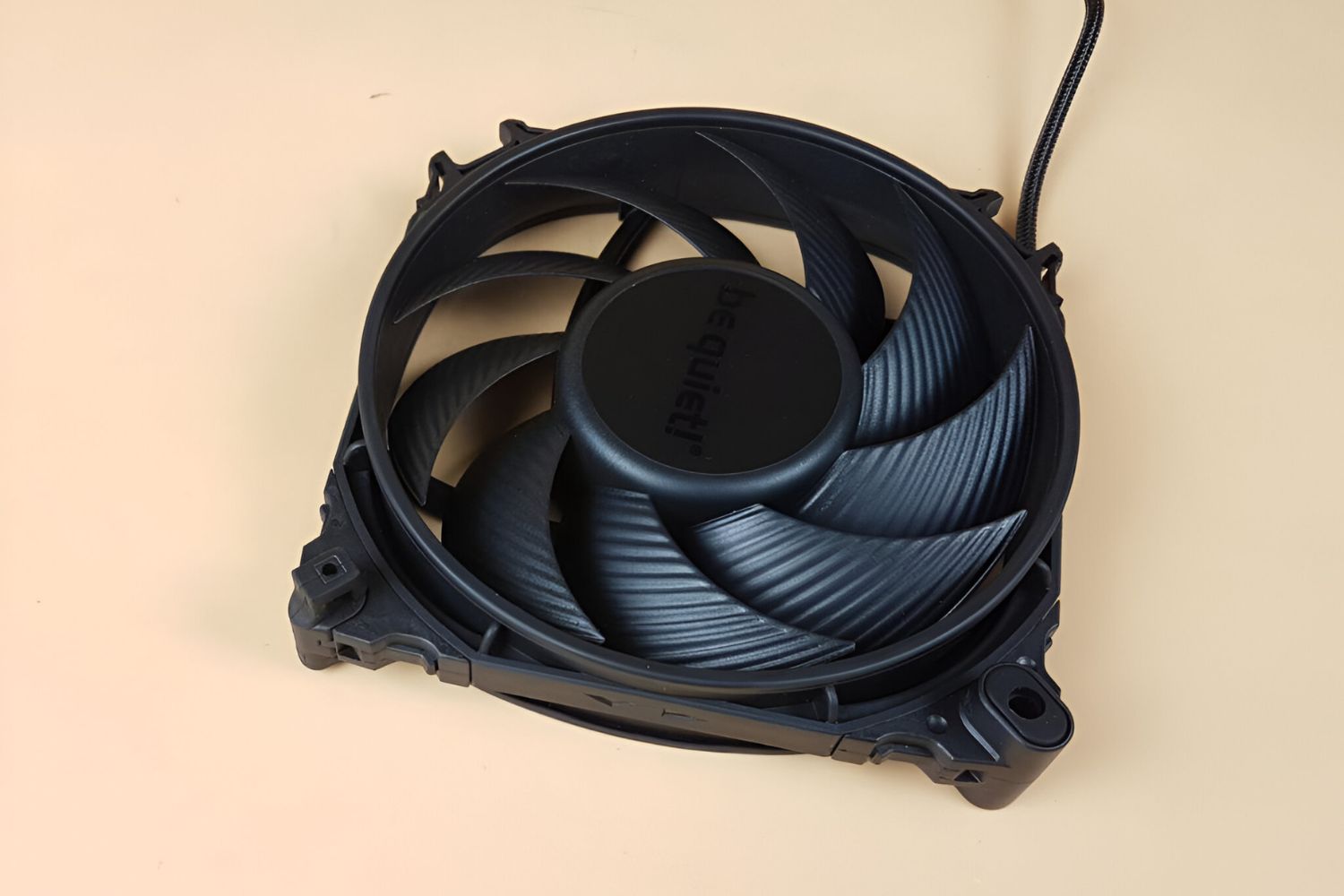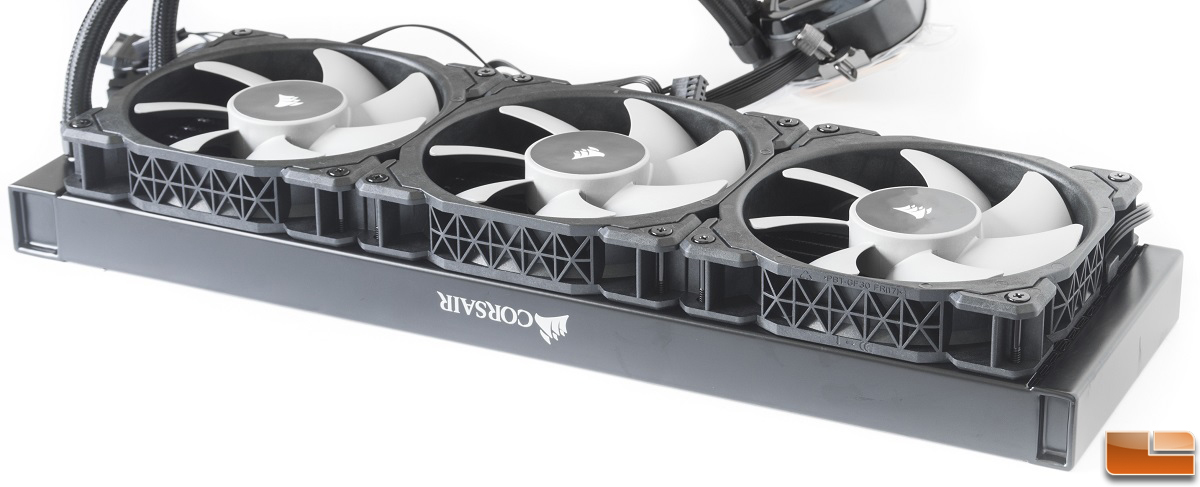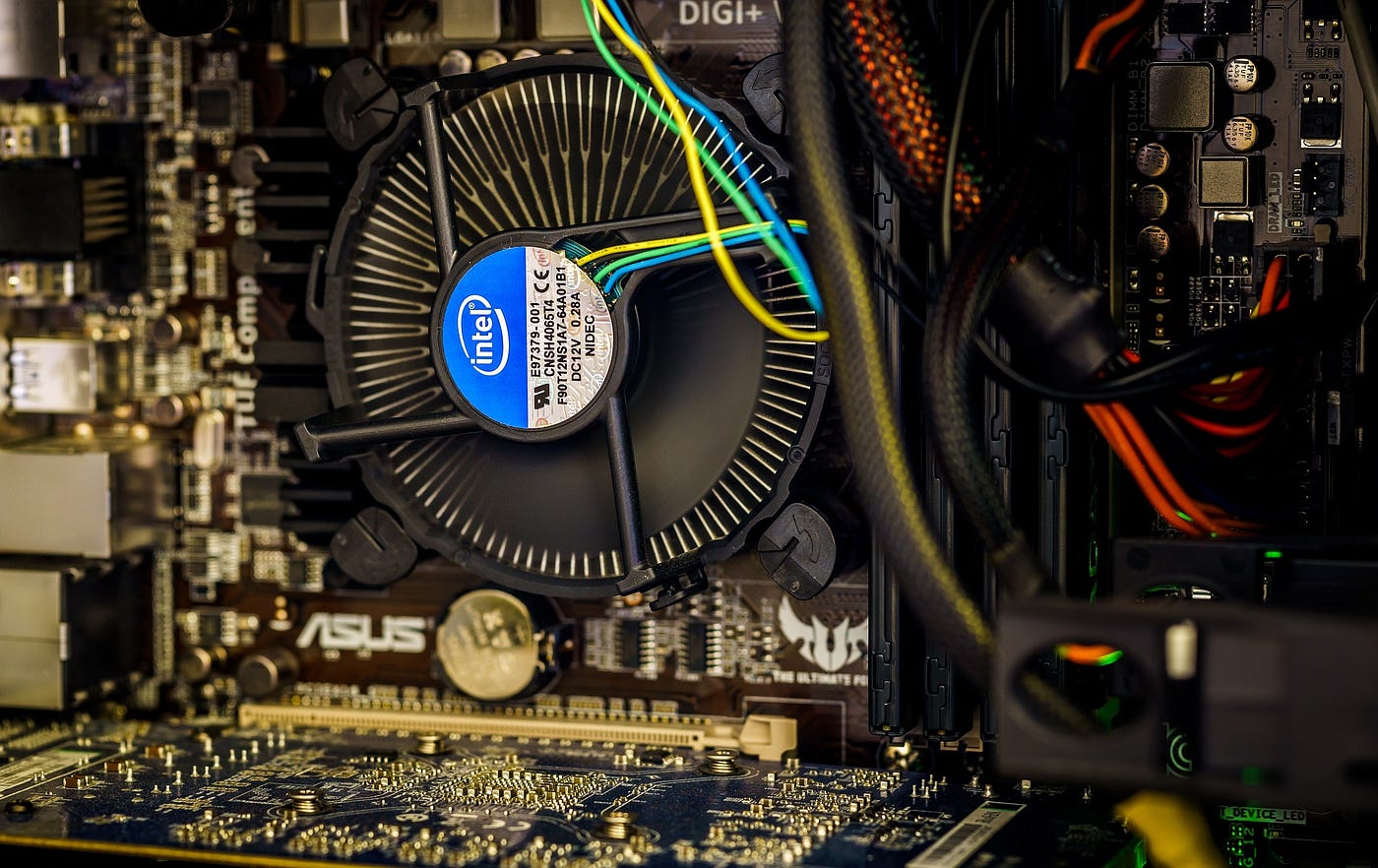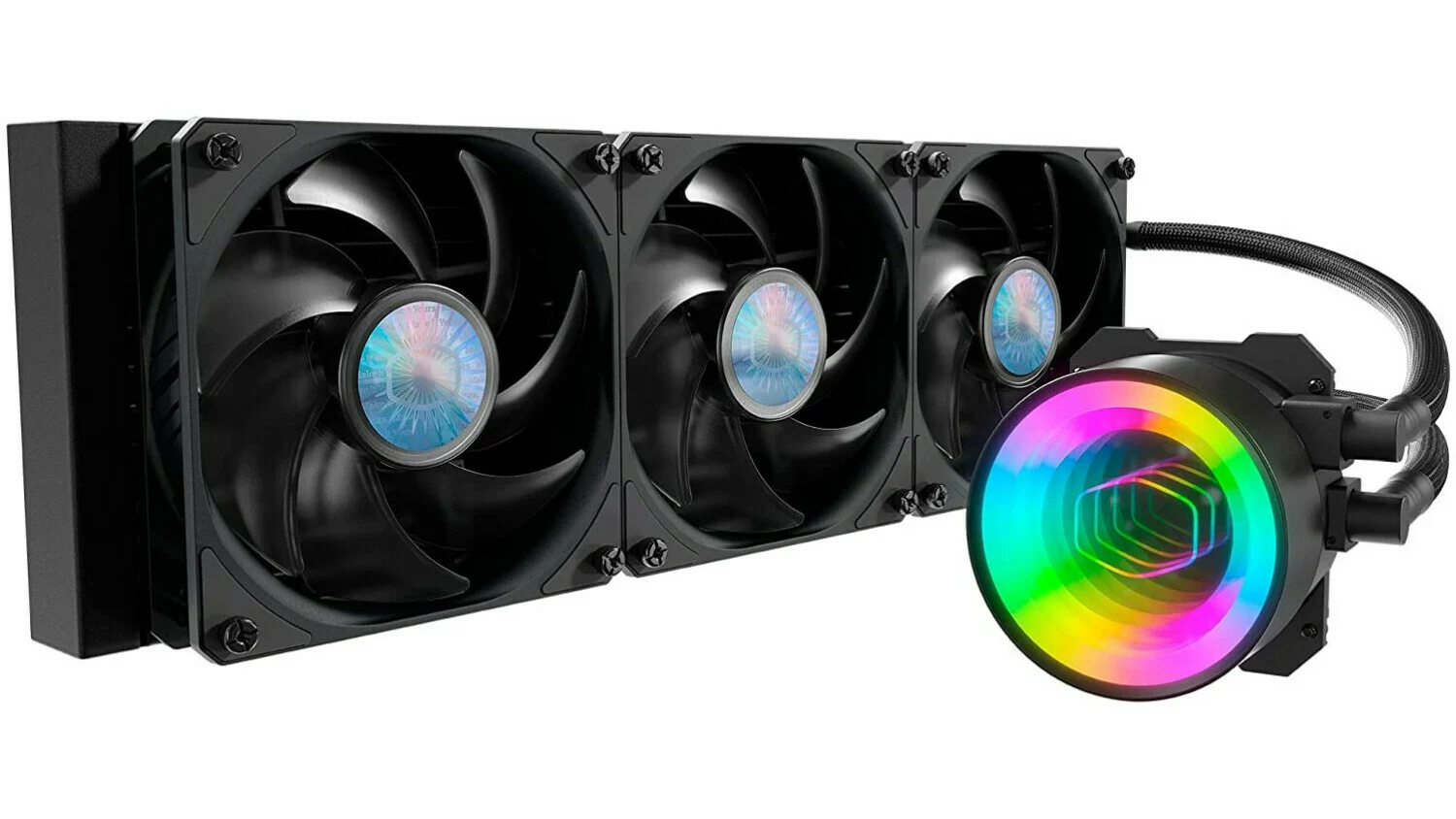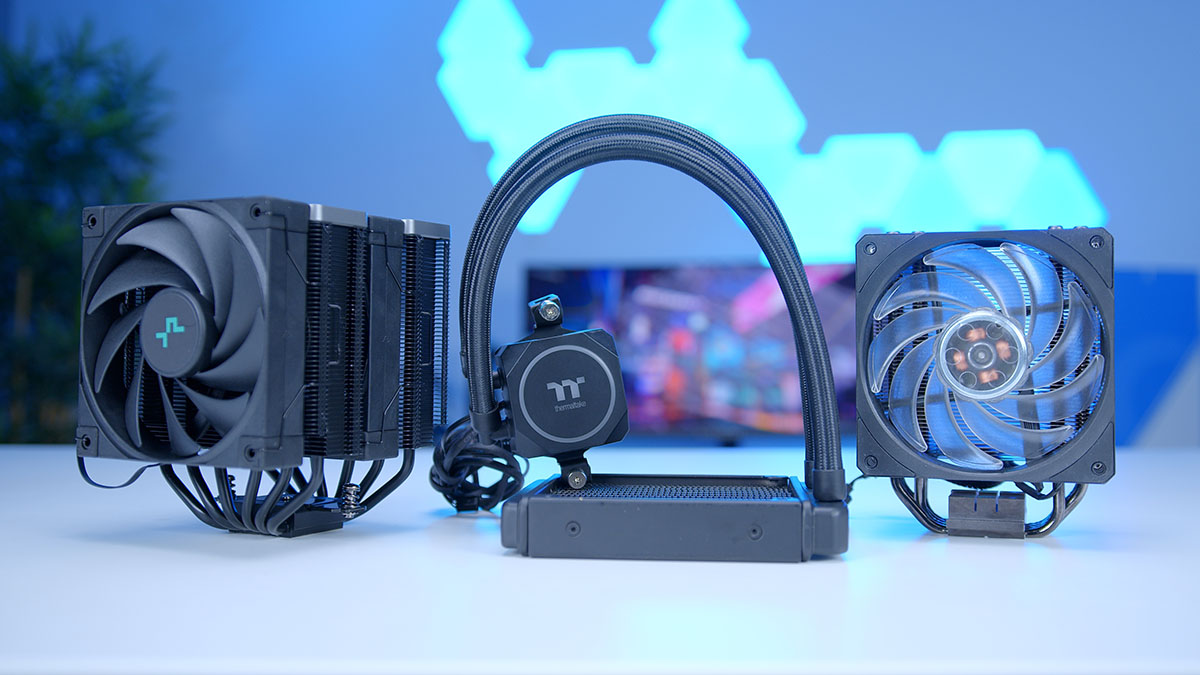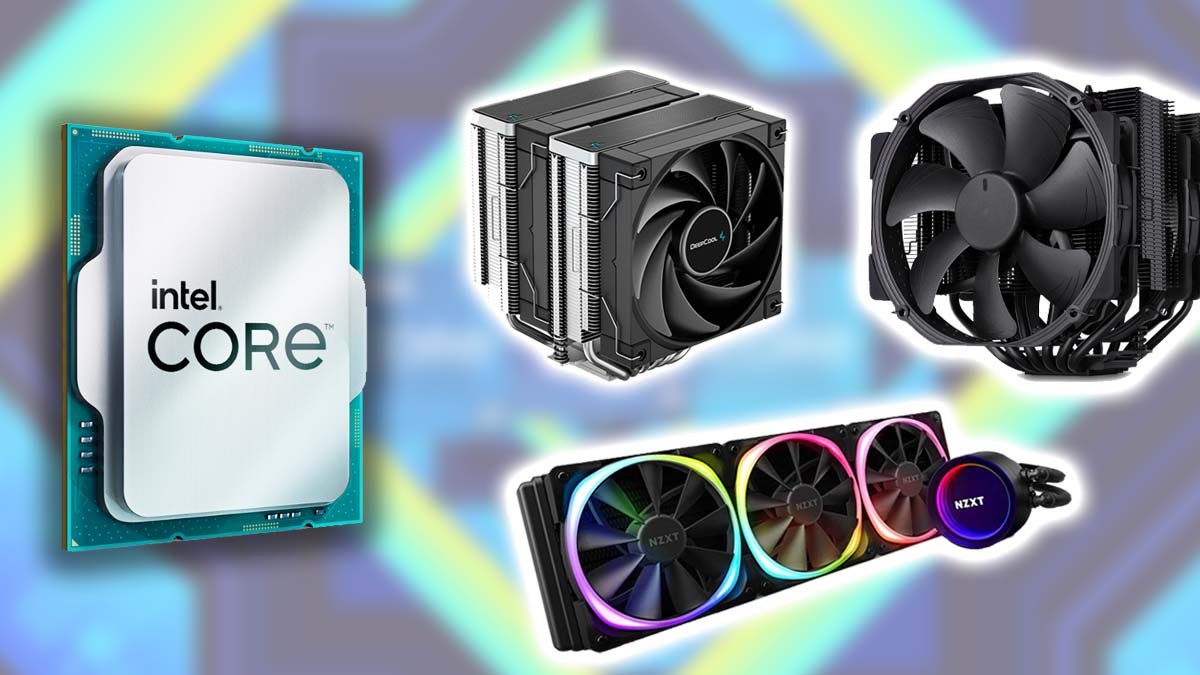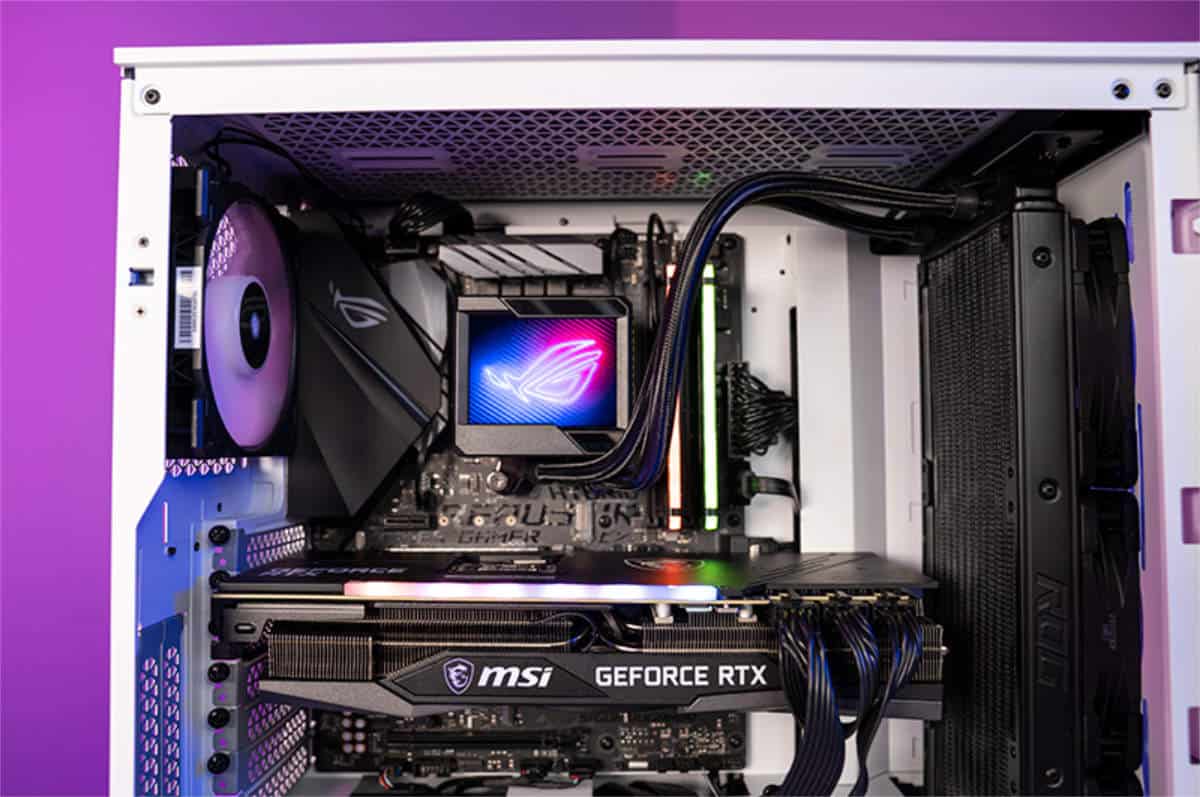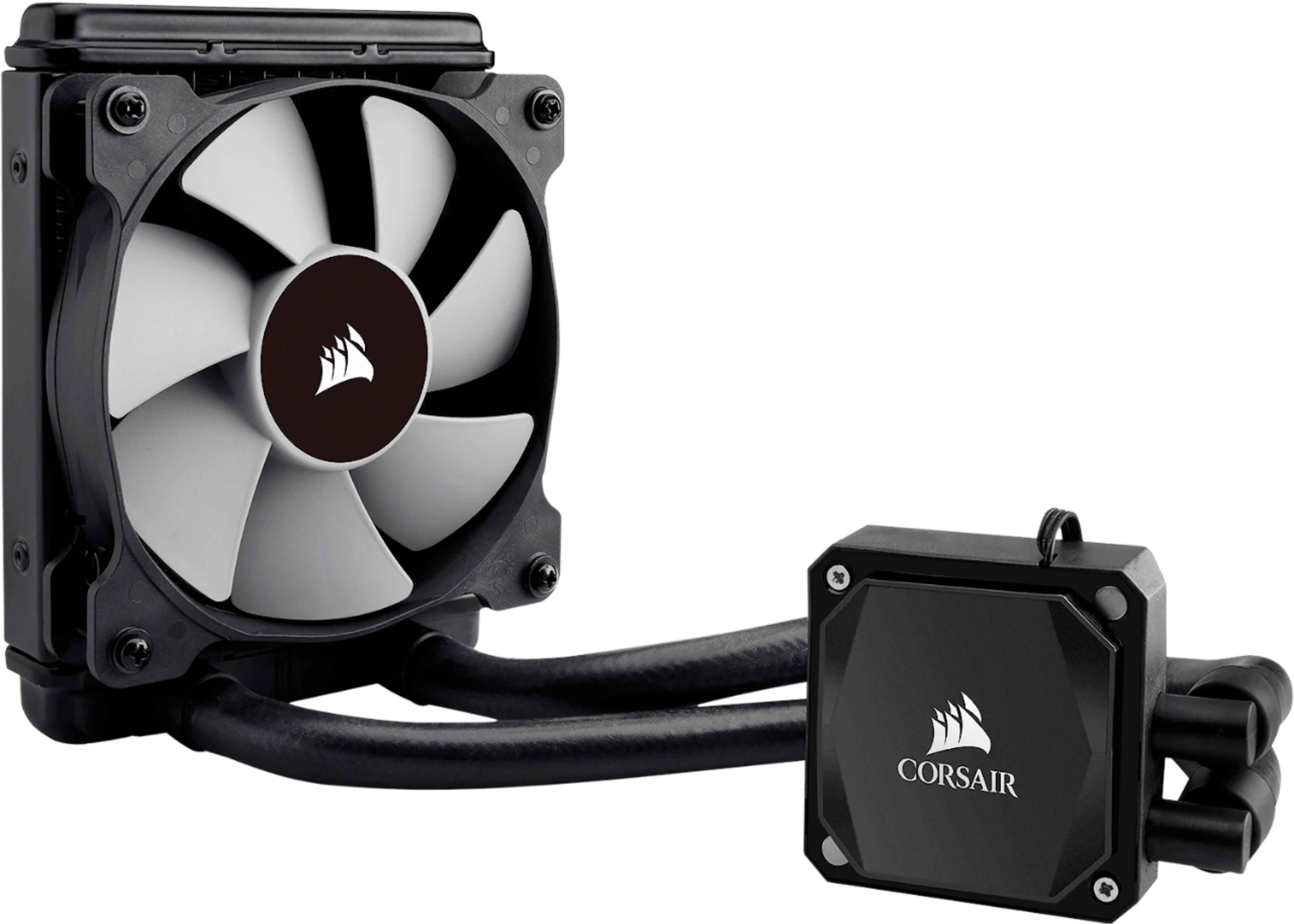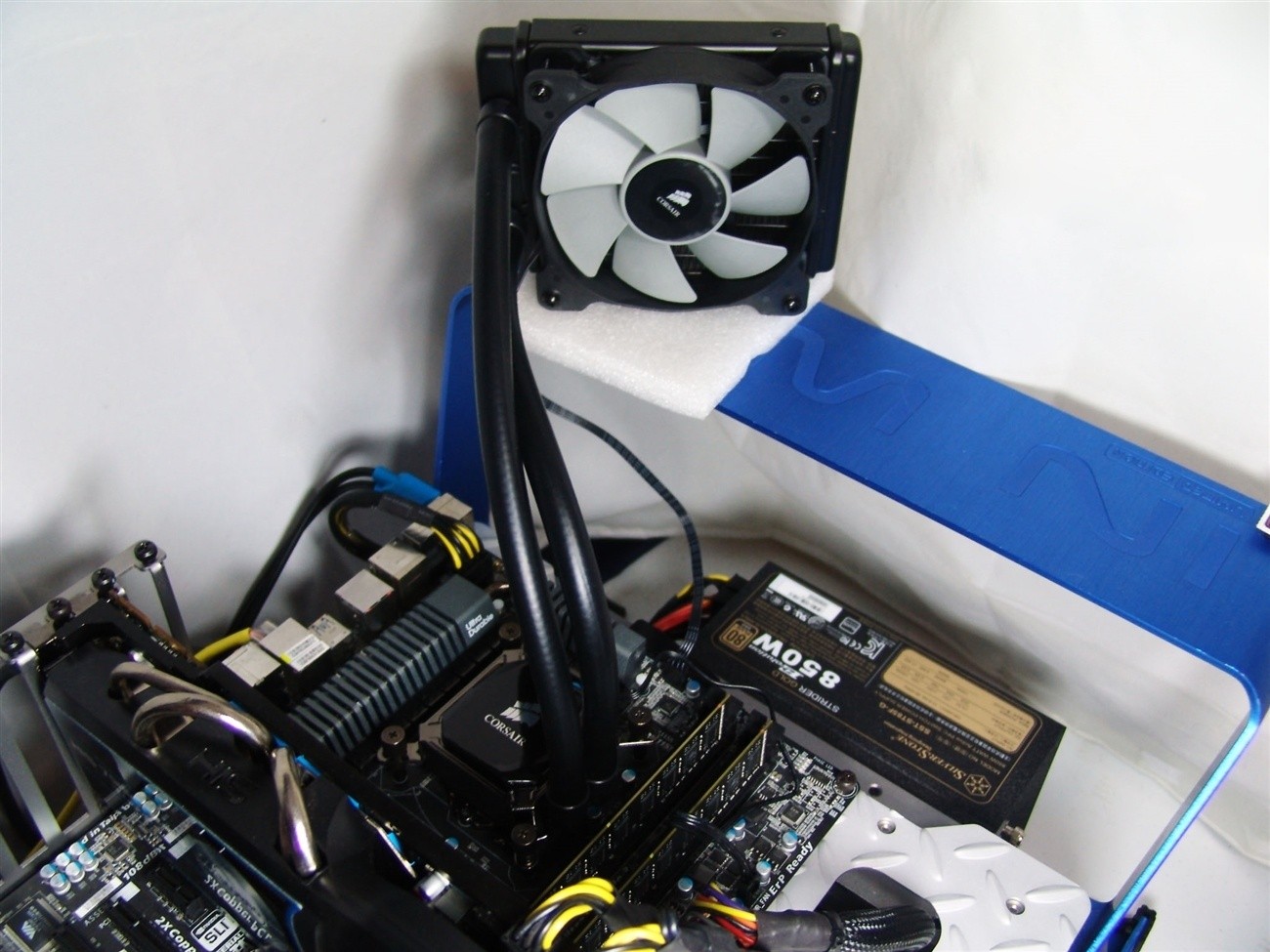Introduction
Welcome to our in-depth exploration of RPM and its significance for CPU coolers. If you have ever ventured into the world of computer hardware, you have probably come across the term RPM, which stands for Revolutions Per Minute. In the context of CPU coolers, RPM refers to the rotational speed of the cooling fan. Understanding its importance can help you make informed decisions when choosing and optimizing your CPU cooling solution.
As the heart of your computer, the CPU generates a significant amount of heat during operation. To prevent overheating and maintain optimal performance, a CPU cooler is essential. The RPM of the cooling fan directly affects the performance and efficiency of the CPU cooler, making it a crucial factor to consider.
In this article, we will delve deeper into the concept of RPM and explore its importance in CPU cooling. We will also discuss how to determine the ideal RPM for your CPU cooler and the factors that can affect RPM. By the end of this article, you will have a clear understanding of the role RPM plays in keeping your CPU cool and maintaining its performance.
So, without further ado, let’s dive into the fascinating world of RPM and CPU cooling!
What is RPM?
RPM, short for Revolutions Per Minute, is a unit of measurement used to determine the rotational speed of an object, such as the cooling fan in a CPU cooler. It represents the number of complete revolutions the object makes in one minute. In the context of CPU coolers, RPM refers to the speed at which the fan blades rotate, which directly affects the airflow and cooling performance.
The RPM of a CPU cooler fan is typically controlled by the motherboard or a dedicated fan controller. By adjusting the fan speed, users can strike a balance between cooling performance and noise level, as higher RPM generally results in better cooling efficiency but also generates more noise.
The RPM of a CPU cooler fan can vary significantly depending on the specific model and manufacturer. Most modern CPU coolers offer a wide range of RPM options, allowing users to customize the cooling performance based on their specific needs and preferences.
It is worth noting that RPM is not the only factor influencing the cooling performance of a CPU cooler. The design of the cooling fins, heat sink, and overall airflow within the case also play significant roles in dissipating the heat effectively.
Now that we have a basic understanding of RPM and its association with CPU coolers, let’s explore why it is crucial to consider the RPM when choosing and optimizing a CPU cooler for your system.
Importance of RPM for CPU Coolers
The RPM of the cooling fan in a CPU cooler plays a vital role in the overall cooling performance of your system. It directly affects the airflow generated by the fan, which in turn determines how effectively heat is dissipated from the CPU and other components.
When it comes to cooling performance, higher RPM generally means better heat dissipation. A higher RPM allows the fan to move a larger volume of air, resulting in faster heat transfer from the CPU to the surroundings. This is particularly important when dealing with high-performance CPUs or during intense computing tasks that generate a significant amount of heat.
However, it is important to note that increasing the RPM also leads to increased noise levels. The higher the RPM, the louder the cooling fan will be. This can be a concern for users who prefer a quieter computing experience. Fortunately, modern CPU coolers often come with fan speed control options, allowing users to adjust the RPM to find the optimal balance between cooling performance and noise level.
The importance of RPM becomes particularly significant when overclocking your CPU. Overclocking involves pushing your CPU beyond its factory-set limits to achieve higher performance. This results in increased heat generation, which requires more effective cooling mechanisms. By adjusting the RPM of the CPU cooler fan, you can ensure that the CPU remains within acceptable temperature ranges, preventing thermal throttling and maintaining stable performance.
Additionally, maintaining an appropriate RPM for your CPU cooler can prolong the lifespan of your components. Excessive heat buildup can lead to premature failure of electronic components, whereas effective cooling, facilitated by the right RPM, helps to keep temperatures in check and ensures the longevity of your hardware.
In summary, the RPM of the CPU cooler fan is of utmost importance for efficient heat dissipation, especially during demanding tasks or when overclocking your CPU. By finding the right balance between RPM and noise level, you can achieve optimal cooling performance while ensuring a comfortable computing environment. Let’s move on to understanding how to determine the ideal RPM for your CPU cooler.
Understanding Fan Speed and Cooling Performance
When it comes to CPU cooling, fan speed is a crucial factor that directly impacts the cooling performance of your system. Fan speed, typically measured in RPM (Revolutions Per Minute), determines how quickly the fan blades rotate and consequently, the airflow generated.
The airflow generated by the CPU cooler fan plays a fundamental role in dissipating heat from the CPU and other components. As the fan spins, it draws in cool air from the surroundings and pushes it over the CPU heatsink, carrying away the heat generated by the processor. The faster the fan spins, the more air it can move, resulting in better heat dissipation.
In general, higher fan speeds, synonymous with higher RPM, lead to more effective cooling. The increased airflow allows for quicker heat transfer, preventing the CPU from overheating and maintaining optimal performance. However, higher fan speeds also result in increased noise levels due to air turbulence and friction. It’s essential to strike a balance between cooling performance and noise levels based on your specific needs and preferences.
On the other hand, running the CPU cooler fan at lower speeds can reduce noise levels, yielding a quieter computing experience. However, this also means that the cooling performance may be compromised, especially under heavy loads or during overclocking scenarios when the CPU generates more heat. It’s crucial to find the optimal fan speed that provides the right balance between noise and cooling efficiency for your particular usage requirements.
It’s worth noting that the cooling performance of a CPU cooler is not solely determined by fan speed. The design of the heatsink, the number and layout of the heat pipes, and the overall airflow within the computer case also play significant roles in effective heat dissipation. However, the fan speed remains a critical factor that can be adjusted to fine-tune the cooling performance.
Now that we’ve established the importance of fan speed in cooling performance, let’s delve into how to determine the ideal RPM for your CPU cooler.
How to Determine the Ideal RPM for Your CPU Cooler
Choosing the ideal RPM for your CPU cooler can be a balancing act between cooling efficiency and noise level. Determining the right RPM involves considering factors such as your computer usage, CPU power, and your preferred noise threshold. Here are a few steps to help you find the optimum fan speed:
1. Understand your CPU: Start by researching your CPU’s specifications, especially its maximum operating temperature. This information will give you a baseline for the cooling performance required to keep your CPU within its recommended temperature range.
2. Assess your computer usage: Consider the tasks you typically perform on your computer. For example, if you frequently engage in resource-intensive activities like gaming or video editing, your CPU will generate more heat. In such cases, a higher RPM might be necessary for efficient cooling.
3. Evaluate noise tolerance: Consider your tolerance for fan noise. If you prioritize a quieter computing environment, you may need to compromise on cooling performance by running the fan at a lower RPM. However, if noise is less of a concern, you can increase the RPM for optimal cooling efficiency.
4. Monitor temperatures: Utilize software utilities or BIOS features to monitor your CPU temperatures during different tasks. Observe the temperatures under both light and heavy usage scenarios. If the temperatures remain within acceptable limits, the current fan speed may be adequate. However, if the temperatures exceed safe thresholds, consider increasing the RPM for better cooling.
5. Experiment and fine-tune: Adjust the fan speed gradually and monitor the impact on temperatures and noise levels. Increase the RPM in small increments and observe the changes. Find the sweet spot where temperatures are kept under control while maintaining an acceptable noise level. This process may require some trial and error to achieve the ideal balance.
Remember, the ideal RPM for your CPU cooler may vary depending on different factors such as ambient temperature, case airflow, and individual system configurations. Therefore, periodic temperature monitoring and adjustments may be necessary to ensure optimal cooling performance.
By following these steps and considering your specific requirements, you can determine the ideal RPM for your CPU cooler, maximizing the cooling efficiency while maintaining a comfortable noise level for your computing experience.
Adjusting RPM for Optimal Performance
Once you have determined the ideal RPM range for your CPU cooler, it’s time to adjust the fan speed to achieve optimal cooling performance. Fine-tuning the RPM allows you to strike a balance between efficient cooling and acceptable noise levels. Here are some tips for adjusting RPM for optimal performance:
1. BIOS settings: Most modern motherboards provide BIOS settings that allow you to adjust fan speeds. Enter the BIOS menu and look for options related to fan control or fan speed. Here, you can set fan curves or choose predefined profiles that match your desired RPM range.
2. Software utilities: There are several software utilities available that allow you to control fan speeds directly from your operating system. These programs provide intuitive interfaces to adjust fan curves, set custom RPM profiles, and monitor temperatures in real-time. Explore reputable software options and find one that is compatible with your CPU cooler and motherboard.
3. Fan controllers: If your motherboard or software options lack advanced fan control features, consider investing in a fan controller. A fan controller allows you to have more precise control over fan speeds by manually adjusting the RPM through hardware knobs or buttons. This can be particularly useful if you have multiple fans in your system and want to adjust their speeds individually.
4. Experiment and monitor: Adjusting the RPM is not a one-time process. It requires experimentation and monitoring to find the optimal balance for your specific setup. Gradually increase or decrease the fan speed and monitor the CPU temperatures and noise levels using software utilities or BIOS monitoring tools. This iterative process will help you fine-tune the RPM for the best cooling performance.
5. Consider additional cooling solutions: In some cases, adjusting the RPM alone may not be sufficient to achieve the desired cooling performance. If you find that your CPU temperatures are still exceeding acceptable limits, you may need to consider additional cooling solutions. This could include upgrading to a more powerful CPU cooler, adding case fans for better airflow, or using liquid cooling systems for more efficient heat dissipation.
By actively adjusting the fan RPM and closely monitoring CPU temperatures, you can optimize the cooling performance and ensure that your system remains within safe operating temperatures. Remember to strike a balance between cooling efficiency and noise levels to create a comfortable computing environment.
Now that we have explored the process of adjusting RPM for optimal performance, let’s move on to discussing the factors that can affect the RPM of CPU coolers.
Factors Affecting RPM of CPU Coolers
The RPM of a CPU cooler can be influenced by various factors, including hardware and software settings, system configurations, and environmental conditions. Understanding these factors can help you better optimize the RPM to achieve efficient cooling performance. Here are the key factors that can affect the RPM of CPU coolers:
1. BIOS settings: The BIOS of your motherboard typically offers control over fan speeds. Some BIOS versions may limit the range of RPM adjustments or provide only a few preset options. Check your motherboard manufacturer’s documentation to understand the available options and limitations for fan control in the BIOS.
2. Software control: Software utilities, such as fan control applications, can provide greater flexibility in adjusting fan speeds. These utilities often offer features like custom fan curves, which allow you to define the RPM based on various temperature thresholds. Ensure that your CPU cooler and motherboard are compatible with the software you choose.
3. Fan type and model: The type and model of the fan itself can affect the RPM. Different fans have different design specifications, including their maximum RPM capabilities. When choosing a CPU cooler, consider the fan specifications in terms of RPM range and its compatibility with your system.
4. Cooling requirements: The cooling requirements of your CPU depend on factors such as its power and overclocking status. CPUs with higher power consumption or those pushed beyond their factory-set limits will generate more heat and may require higher RPMs to effectively dissipate that heat. Evaluate the cooling needs of your CPU to ensure adequate RPM settings.
5. Case airflow: The overall airflow within your computer case can impact the RPM needed for optimal cooling. Proper airflow ensures efficient heat dissipation. Factors such as the number and placement of case fans, cable management, and the presence of obstructions can affect how well the CPU cooler can expel heat. Ensure that your case has adequate airflow to support the cooling performance you desire.
6. Ambient temperature: The ambient temperature, or the temperature of the surrounding environment, can impact the RPM needed for cooling efficiency. Higher ambient temperatures may require higher fan speeds to maintain acceptable CPU temperatures. Consider the climate or room temperature in which your computer operates and adjust the RPM accordingly.
7. Dust accumulation: Dust accumulation on the CPU cooler, fan blades, and heatsink can impede airflow and reduce cooling efficiency. Regularly clean your CPU cooler to prevent dust buildup, as this can cause the fan to work harder to maintain the desired cooling performance. A clean CPU cooler can help maintain optimal RPM levels.
Considering these factors and making the necessary adjustments to your CPU cooler’s RPM will help ensure efficient cooling performance and protect your CPU from overheating. Remember that finding the optimal RPM involves fine-tuning based on your specific system configuration and usage requirements.
Now let’s wrap up this article with a summary of the key points we have discussed.
Conclusion
In conclusion, the RPM (Revolutions Per Minute) of a CPU cooler’s fan plays a crucial role in maintaining optimal cooling performance for your system. By understanding the significance of RPM, you can make informed decisions when choosing a CPU cooler and adjusting the fan speed to achieve the best balance between cooling efficiency and noise levels.
We explored how RPM is a measure of fan speed and its direct impact on airflow and cooling performance. Higher RPM generally leads to better heat dissipation, especially during demanding tasks or overclocking scenarios. However, it’s important to consider the accompanying increase in noise levels and find the optimal RPM range that suits your specific needs.
We discussed the steps involved in determining the ideal RPM for your CPU cooler, which include understanding your CPU’s specifications, assessing your computer usage, evaluating your noise tolerance, monitoring temperatures, and experimenting to find the sweet spot.
Additionally, we highlighted the importance of adjusting the RPM of your CPU cooler for optimal performance. Whether through BIOS settings, software utilities, or fan controllers, adjusting the fan speed allows you to fine-tune the cooling performance to meet your requirements.
We also touched on the factors that can affect the RPM of CPU coolers, such as BIOS settings, fan type and model, cooling requirements, case airflow, ambient temperature, and dust accumulation. Being aware of these factors enables you to optimize the RPM settings and ensure efficient cooling performance.
Remember, finding the right RPM for your CPU cooler is a continuous process that may require periodic adjustments based on system changes, usage patterns, and environmental conditions.
In conclusion (without using the word “conclusion”), understanding the importance of RPM and its impact on CPU cooling performance empowers you to make informed decisions and optimize the cooling efficiency of your system. By finding the right RPM range and considering the various influencing factors, you can ensure that your CPU remains cool and performs at its best, enhancing the overall stability and lifespan of your computer.







